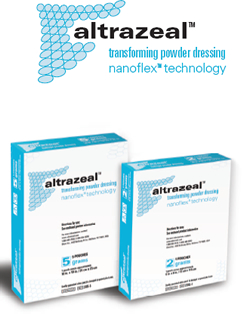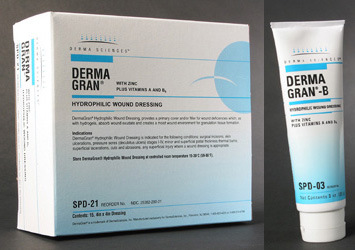Wound Fillers
Wound fillers are beads, creams, foams, gels, ointments, pads, pastes, pillows, powders, strands, or other formulations that are non-adherent. They may include a time-released antimicrobial. Fillers function to maintain a moist environment and manage exudate. Indicated for partial- and full- thickness wounds, infected wounds, draining wounds, and deep wounds that require packing. Absorption capability depends on product composition. They require a secondary dressing.
Wound fillers are beads, creams, foams, gels, ointments, pads, pastes, pillows, powders, strands, or other formulations that are non-adherent. They may include a time-released antimicrobial. Fillers function to maintain a moist environment and manage exudate. Indicated for partial- and full- thickness wounds, infected wounds, draining wounds, and deep wounds that require packing. Absorption capability depends on product composition. They require a secondary dressing.
Wound filler dressings feature the following general performance properties and attributes:
• Fills in dead space
• Easy application and removal
• Facilitates autolytic debridement
• May be absorptive
Wound fillers are indicated for use as a primary dressing in the treatment of minimally to moderately exuding partial- and full-thickness wounds, infected wounds, and deep wounds that require packing to fill dead space.
Wound fillers are typically contraindicated for use on wounds with little to no exudate. Contraindicated for use on third-degree (full-thickness) burns and dry wounds.
The following general warning applies to wound filler products. Always refer to manufacturer information for Warnings and Precautions for a specific product.
Requires a secondary dressing.
Products
Have a product to submit?
Be included in the most comprehensive wound care products directory
and online database.
Learn More












